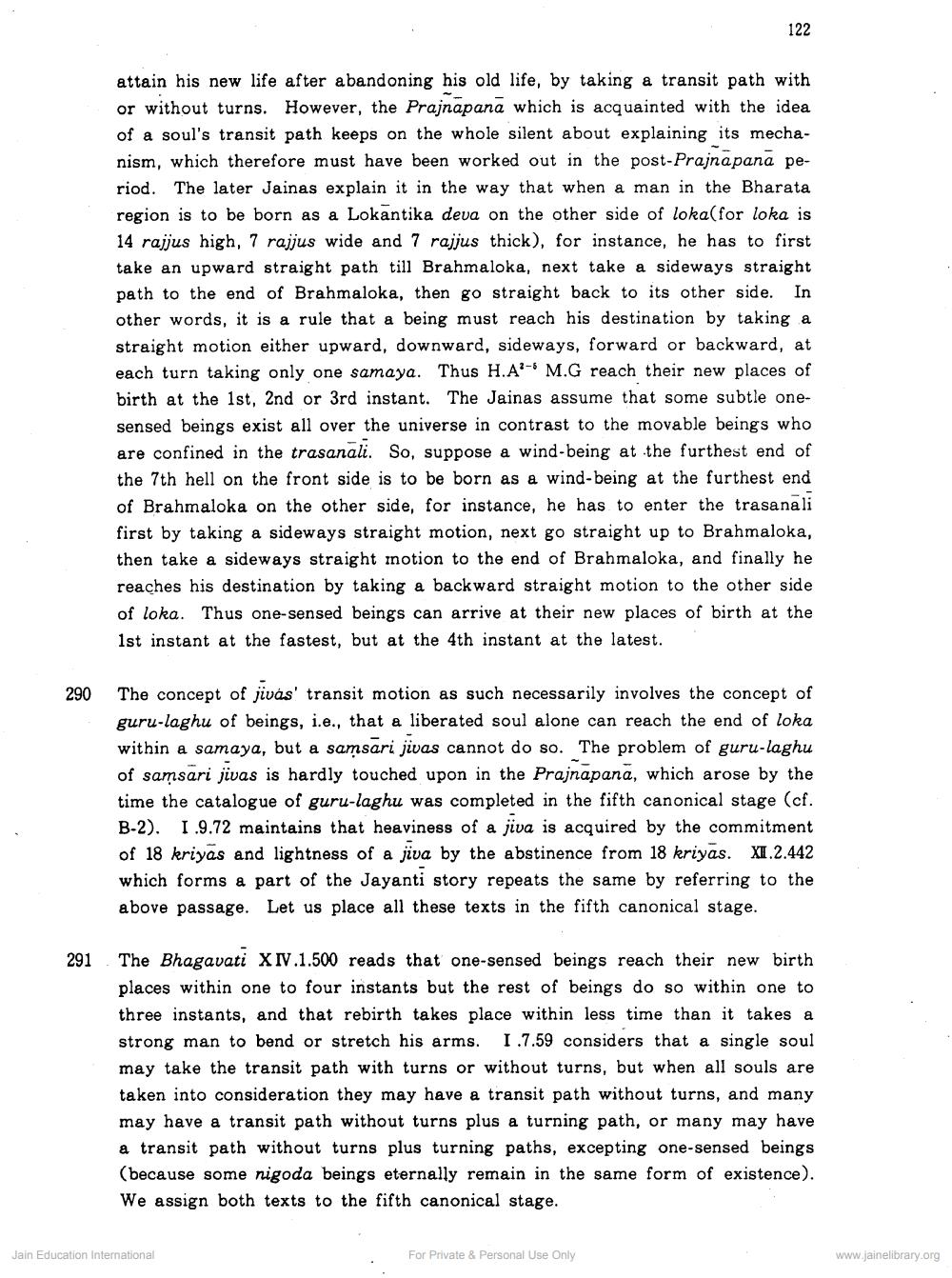________________
290
attain his new life after abandoning his old life, by taking a transit path with or without turns. However, the Prajnapana which is acquainted with the idea of a soul's transit path keeps on the whole silent about explaining its mechanism, which therefore must have been worked out in the post-Prajnapana period. The later Jainas explain it in the way that when a man in the Bharata region is to be born as a Lokantika deva on the other side of loka(for loka is 14 rajjus high, 7 rajjus wide and 7 rajjus thick), for instance, he has to first take an upward straight path till Brahmaloka, next take a sideways straight path to the end of Brahmaloka, then go straight back to its other side. In other words, it is a rule that a being must reach his destination by taking a straight motion either upward, downward, sideways, forward or backward, at each turn taking only one samaya. Thus H.A M.G reach their new places of birth at the 1st, 2nd or 3rd instant. The Jainas assume that some subtle onesensed beings exist all over the universe in contrast to the movable beings who are confined in the trasanali. So, suppose a wind-being at the furthest end of the 7th hell on the front side is to be born as a wind-being at the furthest end of Brahmaloka on the other side, for instance, he has to enter the trasanali first by taking a sideways straight motion, next go straight up to Brahmaloka, then take a sideways straight motion to the end of Brahmaloka, and finally he reaches his destination by taking a backward straight motion to the other side of loka. Thus one-sensed beings can arrive at their new places of birth at the 1st instant at the fastest, but at the 4th instant at the latest.
122
The concept of jivas' transit motion as such necessarily involves the concept of guru-laghu of beings, i.e., that a liberated soul alone can reach the end of loka within a samaya, but a samsari jivas cannot do so. The problem of guru-laghu of samsari jivas is hardly touched upon in the Prajnapana, which arose by the time the catalogue of guru-laghu was completed in the fifth canonical stage (cf. B-2). I.9.72 maintains that heaviness of a jiva is acquired by the commitment of 18 kriyas and lightness of a jiva by the abstinence from 18 kriyas. XI.2.442 which forms a part of the Jayanti story repeats the same by referring to the above passage. Let us place all these texts in the fifth canonical stage.
291 The Bhagavati XIV.1.500 reads that one-sensed beings reach their new birth places within one to four instants but the rest of beings do so within one to three instants, and that rebirth takes place within less time than it takes a strong man to bend or stretch his arms. I.7.59 considers that a single soul may take the transit path with turns or without turns, but when all souls are taken into consideration they may have a transit path without turns, and many may have a transit path without turns plus a turning path, or many may have a transit path without turns plus turning paths, excepting one-sensed beings (because some nigoda beings eternally remain in the same form of existence). We assign both texts to the fifth canonical stage.
Jain Education International
For Private & Personal Use Only
www.jainelibrary.org




